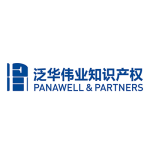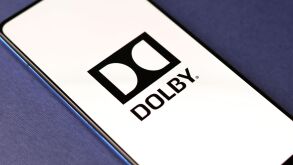If a Chinese company goes to your country to sell products or provide services, it is much better for it to use a trademark in your language there in addition to its Chinese language mark. Similarly in China, a Chinese language mark can be just as important for a foreign company as its foreign language counterpart, if not more so. We all agree that it is essential for a foreign company selling goods or providing services in China to have its English or foreign language marks registered in China. However, some companies we know, such as some smaller ones for example, are still hesitating or even do not like to register in China, marks in the Chinese language. Among some of the reasons for this are uniformity or the difficulty of translation.
Why it is necessary to get the Chinese version of a foreign language mark registered in China?
In the Chinese market, Chinese customers are the target customers and their native language is Chinese. Compared to other non-native languages, the Chinese language is much easier for these customers and the public to remember, pronounce and accept.
Foreign language marks are written in Roman letters which does not coincide with the writing or spelling habits of Chinese natives. It takes more time for the Chinese public to become familiar with foreign language marks due to the foreign language level required and the number of the Chinese population. In other words, a longer time and more money for promotion are required to promote foreign language marks. Whether you accept it or not, the Chinese public will work out a Chinese name for a foreign language mark if the foreign language mark does not have a Chinese counterpart or its Chinese counterpart is not so easy read and recognise.
China has adopted the first to file trademark system. If you fail to select a Chinese language for your foreign language mark soon enough, it is likely your distributors, manufacturers, customers or someone else may select and promote a Chinese name for you and even register it to block your marketing and business in China.
It is also possible that the more delay there is to register a Chinese language mark, the less choice and more blocks you may face when coming to apply for registration of a Chinese language mark.
Let us take one overseas water pump manufacturer as an example. This overseas company believed that it was not necessary to register a Chinese language mark since it used a very simple foreign language mark (it is composed of only four Roman letters) globally, including in China. However, Chinese customers worked out a Chinese language mark (two Chinese characters) as counterpart to the foreign language mark. After 10 years of business under this mark in China, it sought registration of a Chinese language mark. The two Chinese characters chosen by the public came to its mind and it applied but was blocked by the two Chinese characters in the opposite order registered by others years ago. It has taken over three years and cost much money to have these two Chinese characters finally registered.
Therefore, the localisation of your Roman letter marks is necessary in China. All the international well-known trademarks have Chinese language marks in China, such as Apple (苹果), Nike (耐克), IKEA (宜家), Carrefour (家乐福), Google (谷歌), etc. Overseas businesses do not have to attach these Chinese language marks to their goods or services as it has labelled its products identically globally, but it needs to use them in their sales promotions and media promotions in order to achieve a good effect on target customers.
How do you figure out the Chinese language counterpart to a foreign mark?
It is better for a Chinese language mark to have no more than four Chinese characters, if it does not have a specific meaning in the mind of the Chinese public.
The proper Chinese language mark should be easy to remember, pronounce, have a good meaning or invoke a good feeling in the mind of target customers.
Below are ways to help work out a proper Chinese language mark.
Direct translation by meaning (literal translation)
The easiest and best way is to use the Chinese meaning of a foreign language mark if the mark or each part of it has a dictionary meaning and this meaning is positive. In this regard, there are good examples like the well-known Apple which has as its Chinese language mark, "苹果" and Microsoft which has "微软".
However, if a Chinese translation according to meaning leads to lack of distinctiveness, transliteration or translation by pronunciation of the foreign mark is recommended.
Liberal translation
A foreign language mark may have dictionary meaning in Chinese but the direct translation into Chinese may sound awkward. In this case, we need to embellish the Chinese wording and make it more compatible with the reading habits of Chinese natives.
McDonald's, I'm Loving It, the bakery BreadTalk, and the magazine MoneyTalks have used liberal translation for their Chinese language marks. McDonald's uses "我就喜欢" (I love it any way) for I'm Loving It, "面包新语" (Bread new language) for BreadTalk and "钱经" (money book) for MoneyTalks. These Chinese language marks are pleasant to the ears of Chinese customers.
Translation by pronunciation (transliteration)
Businesses prefer to have coined words as trademarks for they are highly distinctive. As a result, most foreign language marks do not have any dictionary meaning and we need to work out their Chinese counterparts by mimicking their pronunciation. In this way, the Chinese language mark sounds like its foreign language counterparts. It is a way for the public concerned in China to associate the Chinese language marks with their foreign counterparts easily.
The supermarket Carrefour uses its transliteration "家乐福" (Jia Le Fu) in China. Adidas is transliterated into "阿迪达斯" (A Di Da Si) and nicknamed "阿迪" (A Di). Nike is called "耐克" (Nai Ke) and Honeywell is "霍尼韦尔" (Huo Ni Wei Er) in China.
These Chinese transliterations are easier to remember and sound like their foreign counterparts.
Combination of transliteration and liberal translation
Chinese language marks from liberal translation do not have similar pronunciation while Chinese language marks from transliteration do not have the same meaning of their foreign counterparts. There is loss using either route. It would be perfect if Chinese language marks could keep both a similar sound and meaning to their foreign counterparts. That is what a combination of transliteration and liberal translation will do.
The Korean brand Lock & Lock uses "乐扣乐扣" as its Chinese language mark. This Chinese language mark sounds like Le kou Le kou and means "happily locked or buttoned."
The automobile brand BMW uses "宝马" as its Chinese language mark. It sounds like Bao ma and means a horse which is able to run a thousand miles easily. In ancient China, horses were used as transportation tools. In light of this Chinese cultural background, this Chinese language mark does reflect the sound and meaning of its foreign counterpart.
The coke giant Coca Cola uses its pronunciation "可口可乐" (ke kou ke le) as its Chinese language mark and it means drinkable or tasty and happiness.
Free translation
Sometimes working out Chinese language marks according to the ways above lead to a situation where the mark is not compatible with the products and sometimes the marks have already been registered by others. In this case, we may try to figure out a Chinese language mark with the help of free translation.
This was done by well-known fast-food restaurant Pizza Hut and cosmetics company Clinique. The former is translated into "必胜客" (Bi Sheng Ke) and the latter is called "倩碧" (Qian Bi). The Chinese language of the two trademarks neither reflects the meaning nor pronunciation of the foreign counterparts. However, they are well-accepted in China by the Chinese public and they are no doubt successful Chinese language trademarks.
What might overseas businesses face when seeking to protect the Chinese language equivalent of their foreign language marks?
The Chinese language equivalent to a foreign language mark should be registered smoothly without encountering any office actions.
If a foreign company figures out a proper Chinese language mark through any of the five ways of translation and the Chinese language mark is registered smoothly, it will be perfect. However, smooth registration has become more and more infrequent due to a huge amount of new applications in China each year.
The Chinese language mark encounters refusal due to prior marks
If an applied-for Chinese language mark is refused in the examination proceedings, we advise either relying on available proceedings such as oppositions, invalidations or non-use cancellation actions to remove the obstacle of prior marks or purchasing the prior mark(s).
It may cost more money but it takes less time to purchase the prior marks than to remove them through available proceedings. There is greater certainty than removing the prior marks.
This situation occurred for the Chinese language mark ("谷歌") (equivalent of Google). One day after Google America declared globally that it was going to use "谷歌" as its Chinese language mark, its Chinese language mark was applied for registration by others in many classes though Google had applied for its Chinese mark in four classes before the date of declaration. It is clear that the registrant was obviously acting in bad faith in applying for the Chinese mark. Google took available proceedings and the applications were removed from the register.
If the available proceedings for removing the prior Chinese marks are not the best choice or do not work successfully, purchase is a way out.
If unfortunately a purchase does not work, the foreign applicant may have to figure out a proper Chinese language mark and promote it with great effort in order to make target customers closely associate this newly worked out Chinese language mark with the foreign counterparts and cut out the natural association between other Chinese language marks and the foreign language mark.
In the Chinese market, the customers and public concerned are using another Chinese language mark rather than the registered Chinese language mark equivalent to the foreign language mark.
This happened to Sony Ericsson. Sony is a Japanese electronics giant and Ericsson is a Swedish mobile phone manufacturer. The two were merged into Sony Ericsson Mobile Communications and their mobile phone brand is called Sony Ericsson. The Chinese language of this brand is transliterated into "索尼爱立信", an easy combination of Chinese language mark of Sony and Ericsson. It has got five Chinese characters and is neither easy to remember nor to pronounce. As a result, the public in China gave it a nickname "索爱", the combination of the first Chinese characters from both Sony and Ericsson. Sony Ericsson refused to accept its nickname and made a written declaration to the public.
Against this background, someone else got "索爱" registered in connection with mobile phones and Sony Ericsson filed to remove this registration but failed. Sony Ericsson filed for judicial review before the court of first instance and appealed to Beijing Higher Court afterwards but all failed. This case even went to the Supreme Court but was not overturned. The main reason was that Sony Ericsson never accepted "索爱" as its Chinese language mark though the public did.
If customers and the public are using a Chinese language mark to refer to its foreign language mark, it is advisable to register this Chinese language mark.
If you have a Chinese language mark and it is well accepted by the public, your business in China will thrive. If not, please follow our advice and register a proper Chinese language mark.

Paula Pei
Paula Pei received a Master of Arts from the University of International Business and Economics (UIBE) in 2006, and qualified as a lawyer in 2010. Ms Pei studied civil law at Renmin University of China as an on-job postgraduate from 2012 to 2014.
Ms Pei has been working in the trademark field since 2013 and before that worked on CDM projects at Sindicatum Carbon Capital for seven years. Ms Pei joined Panawell & Partners in November 2016.
Ms Pei has experience in trademark advice and searches, applications for registration, oppositions, reviews, invalidations, cancellations and appeals, trademark changes, licences, assignments and renewals, and trademark litigation.












